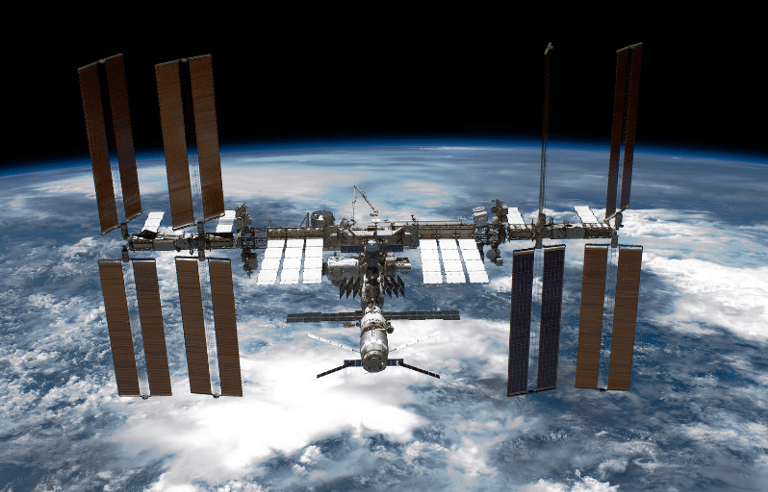Do You Know Why NASA Will Crash the International Space Station Into the Ocean by 2031
NASA has confirmed plans to decommission the International Space Station (ISS) by crashing it into the Pacific Ocean around 2031. After over 30 years of service in space, the iconic ISS will be retired due to ageing parts, high maintenance costs, and the rise of new privately built space stations. Here’s why the ISS will fall into the sea and what will replace it.
WORLD & POLITICSTECH & SCIENCE
Do You Know Team
8/17/20254 min read


For more than 20 years, the International Space Station (ISS) has been floating above Earth, orbiting the planet 16 times a day while carrying astronauts from NASA, ESA, Russia, Japan, and other nations. It has hosted scientific experiments, spacewalks, and global missions in microgravity for two decades. Now, NASA has confirmed that by 2031, the ISS will be deorbited and deliberately crashed into a remote area of the Pacific Ocean, near a location known as Point Nemo.
But why would NASA destroy one of the most important space labs in human history? And what will happen after it falls into the water? Let’s find out.
1. The ISS Is Getting Too Old to Maintain
The ISS was launched in pieces starting from 1998 and assembled in orbit. It was originally designed to last only 15 years. Even though it has been updated and repaired, its hardware is aging. Cracks, leaks, mechanical failures, and increased maintenance make it risky to keep using indefinitely. By 2031, the structure will be over 32 years old.
2. Too Expensive to Keep Running
NASA currently spends around $3–4 billion USD per year to operate the ISS. That is almost one-third of NASA’s entire human spaceflight budget. Keeping the ISS alive reduces funding available for new missions like Artemis Moon missions and Mars exploration.
3. NASA Wants New Commercial Space Stations
NASA’s new plan is to allow private companies like Axiom Space, Orbital Reef (Blue Origin), and others to launch commercial space stations. These private stations would take over research and tourism and be cheaper to run. NASA would rent space there instead of owning a giant station.
4. The Plan to Crash the ISS Safely
Instead of letting the ISS fall randomly, NASA plans a controlled deorbit sometime in early 2031. Using robotic cargo ships (likely the Russian Progress spacecraft or a special tug), they will slow down the ISS so it falls into Earth’s atmosphere. Most of it will burn up, but some debris will splash into the ocean.
5. Why Point Nemo? The Spacecraft Graveyard
The ISS will be directed toward Point Nemo, a remote region in the South Pacific Ocean also known as the “Spacecraft Graveyard.” It is the farthest location from any human population on Earth. More than 260 abandoned spacecraft, satellites, and parts have already been crashed here safely.
6. What Will Replace the ISS?
Several commercial projects are expected to replace ISS:
Axiom Space Station (first module launching 2026)
Orbital Reef by Blue Origin and Sierra Space
Starlab by Nanoracks and Voyager
NASA will buy access for astronauts on these stations at lower cost.
7. Scientific Importance Will Continue
NASA and other space agencies say that even after ISS ends, microgravity experiments will continue on private stations:
Drug research
3D printing organs
Climate and Earth observation
Space agriculture
The research will continue, just from new platforms.
8. Russia Already Announced Exit Plans
Russia's Roscosmos previously said they will leave the ISS around 2028 and build their own “ROSS” station. This was another reason ISS partnership is ending. Without full cooperation, the ISS cannot continue for safety/maintenance.
9. 2031: The Final Splashdown
NASA estimates the final deorbit date around January 2031. Some reports say March 2031. The exact date will depend on international coordination and the condition of the station near the end. It may involve many months of gradual lowering in orbit before final entry.
10. Nostalgia & Historical Impact
For millions around the world, especially students and scientists, the ISS is a symbol of international cooperation in space. Many people will feel emotional when it’s gone. But experts believe its legacy will continue through new private stations and deeper space missions toward the Moon and Mars.
FAQs
Q1: Is the ISS falling in 2025 or 2031?
NASA’s official plan is to safely deorbit the ISS in 2031. Some systems could be shut down earlier, but full retirement and crash are planned for 2031.
Q2: Will the ISS be replaced by another government space station?
Not immediately. It will likely be replaced by commercial stations run by private companies, while government agencies rent space/time there.
Q3: Why can’t they bring the ISS back to Earth safely as a museum?
The ISS is too big (over 420,000 kg) to bring back safely. It would break apart, and the cost to bring it intact is not feasible.
Q4: Could any astronauts be on board when it crashes?
No. The ISS will be empty at the end. All astronauts will be removed before deorbit begins. Cargo robots will steer it afterward.
Q5: Will any parts land on land or hurt people?
It is highly unlikely. NASA will target Point Nemo, the most remote ocean area, and most parts will burn up during reentry.
Conclusion
The International Space Station has served humanity for over three decades, offering historic scientific discoveries and international collaboration. But like all machines, it has a lifespan. By 2031, NASA plans to retire it gracefully by crashing it into Earth’s most remote ocean. This plan is about safety, cost reduction, and a new era of private space exploration.
Though the ISS will soon be gone, its legacy will remain — and the future of human space travel will continue with privately built stations and deep space missions to the Moon and Mars. The spaceship that has been humanity’s home in orbit will end its journey in water — but it will inspire the generation that takes us even farther.
#ISS2031 #InternationalSpaceStation #NASA #SpaceNews #DoYouKnow #SpaceGraveyard #PointNemo #FutureSpaceTravel #SpaceStationRetirement #Science2025
Knowledge
Empowering minds with reliable educational content daily.
Newsletter Signup
© 2025 DoYouKnow. All rights reserved.
Stay Ahead of the Trends – Join Our Newsletter
